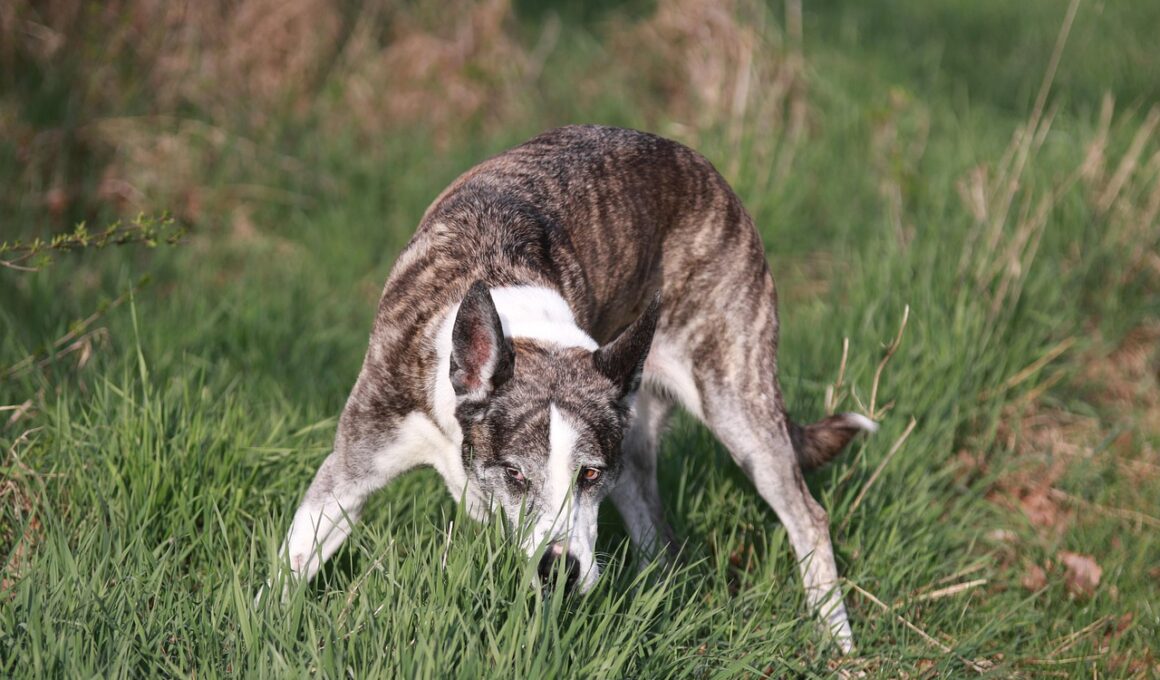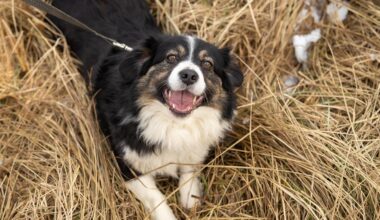Training Hunting Dogs to Track Scent Trails Effectively
Training your hunting dog to track scent trails effectively involves patience, consistency, and the right techniques. Firstly, establishing a solid foundation begins with socialization and obedience training. Introduce your dog to various environments and people to build their confidence. The early exposure to diverse experiences helps them retain focus during hunting expeditions. Next, implement scent work exercises utilizing items with appealing scents. You can start with something simple, like a piece of meat or a favorite toy, and progressively introduce more complex scents. Utilizing a long lead can help control your dog while they practice tracking. Training with a partner can also enhance progress, as the other person can introduce distractions similar to hunting scenarios. Make sure to praise your dog frequently; positive reinforcement is crucial in encouraging desired behaviors. Keep the training sessions brief yet engaging, as young dogs can lose focus quickly. If possible, engage in training sessions in natural settings. Variables in the environment increase your dog’s adaptation skills for real hunts, setting them up for success. Always end sessions positively, ensuring your dog associates tracking with joy and accomplishment.
Knowing the ideal tools can enhance your dog’s tracking training. There are various tracking harnesses and leashes specifically tailored for scent work. Selecting the right equipment ensures that your dog remains comfortable and secure while learning this vital skill. When choosing a harness, consider options that provide full chest support, enabling better movement and comfort. A suitable harness also gives you better control over your dog. Additionally, training your dog in various terrains gradually introduces different scents and challenges. Start on flat, familiar ground before progressing to uneven or challenging terrains. This gradual increase in difficulty reinforces your dog’s learning as they begin adapting to changing environments. Use clear and consistent commands during tracking; this clarity will help avoid confusion for your dog. Repetition is key, so practice tracking in both familiar locations and new ones to prevent monotony. Dogs thrive on a challenge, and presenting new terrains will engage and motivate them. Monitor your dog’s reactions to different scents and environments to understand which areas excite them the most. Adjust your approach based on their preferences, allowing them to take the lead in their training journey for optimal effectiveness.
Tracking Techniques for Success
There are various techniques that you can adopt to enhance your training success rate with hunting dogs. One effective approach is the use of food trails, where a pattern of treats is laid for the dog to follow. This not only teaches them to track but also keeps them motivated by rewarding their efforts. Gradually transition from food trails to scent trails related to your hunting endeavors. Once they’ve mastered following food trails, switch to using scents from the game you’ll be hunting. Emphasizing different scents can help sharpen their tracking abilities. Diversifying scent options allows your dog to enhance their natural instincts and makes the experience more dynamic. Additionally, employing the help of tracking articles familiarizes your dog with real-world applications. A tracking article could be a piece of fabric from a specific animal or even footwear from an unsuspecting hunter, all scented in a controlled environment. This provides a practical element to the training and improves their engagement. Be patient as it may take time for the dog to confidently associate each scent with a specific action. Monitoring your dog’s improvements is essential to adapt techniques appropriately to maintain their interest and motivation.
Incorporating play is an excellent way to enhance scent tracking training. Encouraging your dog to engage in playful activities not only helps strengthen the bond between you but also reinforces tracking skills without them realizing it. Games like Hide and Seek or searching for hidden toys can naturally improve their scenting abilities while making training fun. Mix training sessions with play to keep your dog eager and engaged. Intermittently introduce challenges like hiding the toy in challenging spots, making them use their nose skills while searching. Having fun increases their motivation and helps them associate positive feelings with the act of tracking. Consider using clicker training methods during play to reinforce desired behaviors. This method helps clarify the connection between actions and rewards, effectively communicating that tracking scents leads to positivity. As your dog becomes more adept, you can introduce increased distractions to simulate real hunting scenarios. Train your dog to focus on the scent rather than the many outside influences they might encounter in the field. This method prepares them for the dynamic situations they will face in various hunting environments.
Setting Realistic Goals
Establishing realistic goals is essential for tracking success with your hunting dog. Knowing what to expect is key to maintaining patience and understanding. Initially, break down the training into manageable phases, focusing first on establishing the foundation with obedience and basic tracking skills. Each training session should have a specific objective that is achievable. This approach will motivate your dog while also allowing them to build confidence. Gradually raise the difficulty level as their skills develop. Continually reassess these goals and adjust as needed based on your dog’s progress and ability. Recognizing their advancements, no matter how small, keeps the motivation flowing on both ends. Additionally, documenting progress helps track what techniques work well and what doesn’t, refining your training over time. This method can also provide insight into which scent trails your dog excels at following. Balancing practice sessions with regular breaks ensures your dog remains enthusiastic and willing to engage in tracking work. Flexible training is essential, catering to your dog’s individual learning pace while challenging enough to avoid boredom. Monitor their body language to ensure they are receptive to new challenges.
Of course, participating in hunting dog training classes can provide significant advantages. Joining such a program brings guidance from experienced trainers, allowing access to a plethora of knowledge tailored to specific dog behaviors and traits. Exposure to skilled trainers helps you implement best practices while opening up avenues for networking with other hunting dog enthusiasts. This community can offer encouragement and share experiences that enhance your learning experience. Classes often provide structured environments that are beneficial for your dog’s development as they learn to track alongside others. Group trainings can also simulate real-world hunting scenarios, providing great practice grounds. This environment cultivates friendly competition and motivation while implementing diverse exercises to improve your dog’s skills. Selecting the right course involves researching available options carefully; considering instructors’ reputations is essential. Regular attendance helps accelerate the learning process, enriching both you and your dog’s skills. Stay engaged during these classes by asking questions and seeking advice. Active participation results in a more enjoyable experience and aids in building a keen understanding of various techniques crucial for effective scent tracking in hunting situations.
Maintaining Persistence in Training
Persistence plays a crucial role in training hunting dogs to track scent trails effectively. It’s essential to remember that every dog learns at their own pace; some may require more time and effort before they understand complex techniques. As a handler, understanding this will help you remain patient and committed throughout the process. Consistency in your training efforts is vital, ensuring that your dog develops the necessary skills over time. Keep a regular schedule for training sessions, making them frequent but manageable based on your dog’s capabilities and needs. Staying committed during this journey is critical; the more time and effort you invest, the better the results will be. However, remaining adaptable is equally important; be prepared to switch approaches if a technique doesn’t resonate with your dog. Observe their behavior and reactions closely to assist in adopting tailored techniques that suit their temperament and learning style. Celebrate small victories during this journey to acknowledge their progress and reinforce positive behaviors. Whether mastering a specific command or successfully following a scent trail, these successes foster confidence and motivation for continued growth.
Ultimately, the goal of training your hunting dog to track scent trails effectively is not just about preparing for the hunt; it is about building a lifelong partnership based on trust and mutual understanding. Your dog, through training, learns to rely on your guidance in unfamiliar settings. This relationship translates into a successful hunting experience and a deeper bond between both of you. Exploring various training methods allows you to discover what resonates best with your dog’s natural instincts and abilities. The adventure of training creates shared experiences that strengthen trust and companionship. Always remember that fun is essential within that relationship; it keeps your dog engaged and eager to learn. Incorporate variety into your training sessions to maintain this engagement—switch up locations, obstacles, and scents to keep the atmosphere lively. Moreover, post-training reflection for both you and your dog can further enhance learning experiences. Analyzing what went well and what needs adjustments can help strategize for future sessions, ensuring continuous improvement. As you both progress, the joy of watching your hunting dog flourish into a proficient tracking candidate is rewarding. Together, this journey ultimately leads to improved performance and a fulfilling hunting experience.


